Zambian Food: Basic Overview
Common Ingredients
Common Cooking Methods
Courses
Meals
Key Taste
Eating Etiquette
Meal Presentation
Culinary Festivals
Influence and Fusion
Popular Types of Zambian Food
-
Vegetarian Dishes
Zambian cuisine focuses on the country’s agricultural practices, creating many options for vegetarian diets.
Common ingredients in these recipes are vegetables, legumes, and grains.
These dishes provide fulfilling and nutritious meals.
-
Snacks
Snacks in Zambia range from simple roasted nuts and fruits to more complex fried bites and street food.
These quick eats use both traditional ingredients and modern flavors.
Everyone can enjoy them throughout the day.
-
Porridge
Porridge is a staple in Zambian breakfast routines, made from maize, millet, or sorghum flour.
Nshima is the most famous one. This recipe has a porridge-like consistency, serving as the base for vegetarian and meat dishes.
Zambian dishes are culinary creations showcasing the country’s magnificent cuisine. These African staples feature various ingredients like maize, cassava, vegetables, bushmeat, and unique street foods.
Nshima, a maize porridge, is a central dish in Zambia, and it acts as a main staple food in many meals. There are other dishes worth exploring in the country.
Besides these well-known Zambian delights, I’ll also introduce traditional food components, their global popularity, and how healthy they are. Later, let’s check out some ideal drinks to complement dishes in this country.
Hop on this exciting expedition with me and enjoy all the cultures and tastes of Zambia’s best dishes and foods.
15 Popular Zambian Dishes with Filters
Check out the top 15 Zambian specialties, celebrated for their deliciousness and popularity.
Plus, you should use the available filters to explore Zambian dishes by their taste profiles, ingredients, dish types, cooking methods, etc., for better searching.
There are other key highlights of Zambian cuisine, including the most cherished, traditional, national dish, popular street foods, and innovative fusion creations. Check out the below characteristics for more details.
Nshima, an iconic Zambian recipe, is essential at gatherings and acts as the nation’s agricultural heritage.
They are deeply rooted in Zambia’s culture, featuring ingredients like maize, fish, and indigenous vegetables.
These foods are vibrant, such as roasted maize and worms, providing quick and also distinctive options to the urban populace.
They include caterpillars or wild game, offering unique flavors that not everyone dares to try.
Chibwabwa
- Traditional
Chibwabwa is a traditional Zambian dish made from pumpkin leaves. As pumpkin is one of the most common vegetables grown in this country, its leaves are adored by most Zambian citizens. The leaves are often stewed with other vegetables like impwa or paired with dry fish.
Zambians also dry pumpkin leaves and mix it with oil, groundnuts, or dried veggie dishes like Mundyoli. People also boil them in water to form a thick texture stew.
This is a common side dish for any meal. The dish is a typical companion for nshima – a thick cornmeal porridge.
Nshima
- National
- Traditional
Nshima is the national dish of Zambia. It’s an extremely thick porridge made from finely ground cornmeal.
This dish has a mild taste that highlights other dishes paired with it. Zambians often eat Nshima by one hand, and the dish is usually served in lumps. People will break the nshima lumps, make a ball shape with their fingers, and enjoy the dish.
Nshima has two variants: one prepared without water until boiling, and another mixed with room temperature water before boiling the cornmeal flour.
Nshima has been added to the Representative List of the Intangible Cultural Heritage of Humanity from UNESCO since 2017.
Ifinkubala
- Exotic
- Street Food
- Traditional
Ifinkubala, aka mopane worms, is considered a Zambian delicacy. Mopane worms are edible and rich in proteins (twice the protein content in meat).
Zambians harvest the worms twice annually, mainly during the early and full rainy seasons. After collection, the worms are cleaned, dried in sunlight for preservation, and sold in local markets.
They can be boiled or fried with spices such as salt and onion, served as a relish with nshima, or enjoyed as a snack.
Kapenta
- Street Food
Kapenta is the name of a dried tanganyika sardine dish in Zambia. There are two species of this fish: Lake tanganyika sardine and Lake tanganyika sprat.
Zambians often dry this tiny fish on rocks, concrete slabs, netting, or any clean surface directly under the sun. You should dry Kapenta on racks for the best flavor. Drying duration usually takes around one day up to the weather.
You can savor kapenta with nshima or veggie dishes like chibwabwa and delele. Kepenta is popular in the rural area where you will find it mostly sold on the streets or in the markets.
Chikanda
- Traditional
Chikanda is a popular snack in Zambia. The dish has its signature shape due to the use of a tuber from Chikanda orchids.
Habenaria, Disa, and Satyrium genera are some main orchid species used for making chikanda. After stuffing all the ingredients in the tube, the chef will boil the tub until receiving a cake-like dough.
Chikanda resembles a Polony (or Bologna), a special sausage type in Bologna (Italy). That is why many people call this food an ‘African polony’. The dish is believed to be a cuisine of Bemba people in northeast Zambia.
Zambians usually serve the dish as a snack or as a part of a main meal. They also pair chikanda with nshima with it.
Ifisashi
- Traditional
Ifisashi is a traditional Zambian dish featuring vegetables, often greens, cooked with ground peanuts to create a creamy sauce.
Pumpkin or sweet potato leaves are bathed in peanut sauce. Other veggies like tomatoes, spinach, and okra are also typical choices to mix in this thick texture dish.
Traditionally, Ifisashi is a perfect dish for vegetarians. Overall, this nutritious meal emphasizes the use of local ingredients. It’s commonly served with nshima.
Samp
- Traditional
In Zambia, samp is a fantastic dish where corn kernels are dried, chopped, and pounded. The result is beautifully broken corn kernels (not finely grounded).
Lozi and Tonga people in this country love enjoying Samp. They usually have it with sugar and sour milk. Locals also serve it with meat like lamb, beef, and poultry or use it as a stuffing ingredient.
Samp is an affordable choice to treat a crowded group. Zambians often match samp with chakalaka (a spicy vegetable relish originating from South Africa).
Kandolo
- Traditional
Kandolo is a Nyanja word for sweet potatoes, and this plant is consumed widely in the country and some areas of Africa.
These sweet potatoes can be prepared by frying, boiling (either peeled or with their skins), roasting, grilling, baking, or even mixing with peanuts to add a nutty flavor. They can be shaped into balls as well.
Their flexibility in preparation methods makes kandolo suitable for any meal of the day: breakfast, lunch, or dinner.
Delele
- Traditional
Delele is a special dish named after the plant used for making it in Zambia. In fact, delele means okra in the country.
People often have delele with nshima for a unique flavor. Zambians will cook fresh delele in water with some sliced tomatoes. Traditionally, baking soda will be added to form a thick and glutinous paste.
Vitumbuwa
- Street Food
On the roadside or in the market of Zambia, you will likely run into a street food vendor selling vitumbuwa, a crispy and tasty type of donut in Africa. These donuts are traditionally made from wheat flour.
These tasty balls are a cheap Zambian breakfast meal. Sellers will serve vitumbuwa hot in crowded places like schools, bus stops, or offices. You can pair vitumbuwa with either a hot or a cold drink.
Tute Ne Mbalala
- Street Food
- Traditional
Tute ne mbalala (also known as cassava and groundnuts) is a crunchy snack from Zambia with a splendid smoky aroma and nutty taste.
People will roast water-soaked cassava on a brazier until the cover turns brownish-yellow. Cassava needs soaking into the water to soften its texture. Just like vitumbuwa, this specialty is typically sold in areas with high traffic.
Roasted Maize
- Street Food
Maize (or corn) is one of the top staple foods in Zambia, and roasted maize is a simple street food that you can easily find on almost any street in the country.
The corn used for this dish must be the ripe ones. This corn is different from common baby yellow corn that is consumed worldwide. When grilled, the corn will start to pop and hiss.
Street food vendors in Africa usually pick up and arrange the roasted corn on hot coals with their bare hands.
Michopo
- Street Food
Michopo is goat or beef meat grilled over a charcoal fire. The dish is often made in public areas such as a street corner or a famous drinking spot in town.
This grilled dish’s flavor and texture match perfectly the strong taste of alcohol. So, if you want a nice companion for your drink, try nichopo.
This dish is often sold by a male vendor. The vendor will wrap michopo in newspaper or Styrofoam packs with onion rings. Plenty of seasonings will be displayed for you to choose from.
Curried Gazelle
- Exotic
Gazelle is one of the wild spices that give high-quality meat, and curried gazelle is a lovely Zambian dish for the dinner table.
Customarily, the dish is made out of gazelle rump steak, coconut milk, and tomato paste. Other fragrant spices like cardamom, curry powder, garlic, and chilis are added.
The dish is slow-cooked until perfection and is usually served hot with white rice.
Golabjamoun
- Exotic
Golabjamoun are Zambian cookies that are more like donuts or fritters.
This dish was first brought to Zambia by Indian railway workers in the early 20th century. These lovely balls are made out of sweet potatoes, milk, and sugar. People often bake them in an open fire.
Zambians often enjoy the dish plain, but you can dust some powdered sugar or drop some sweet condensed milk for extra sweetness.
What Is Zambian Etiquette?
Here are five general rules on dining tables in Zambia.
After grasping Zambian mealtime customs, let’s elevate your dining experience by choosing the right drinks to pair with delicacies.
Which Beverages Best Complement Zambian Delights?
Here are some beverages in Zambian cuisine that perfectly upgrade the country’s dishes.
What do you think about Zambian cuisine? Isn’t it fascinating? Although Zambia is just a small country, trying its foods is a fantastic way to learn more about its culture.
So, this is a wrap for today! What are your favorite Zambian dishes? Let me know your opinion in the comment section. Have a nice day!


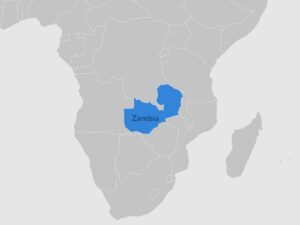
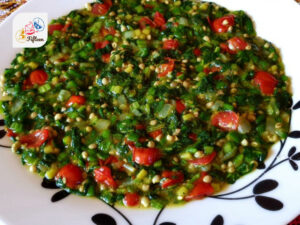
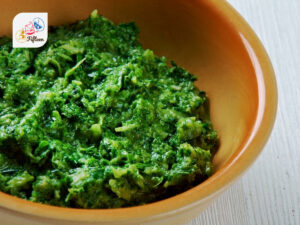
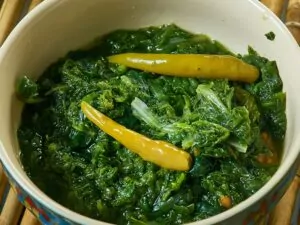
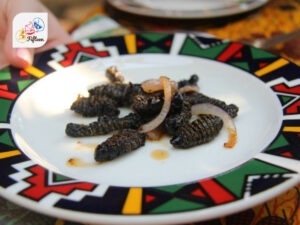
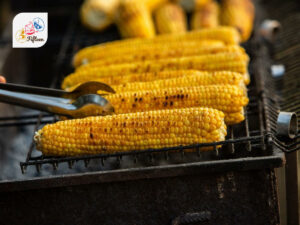
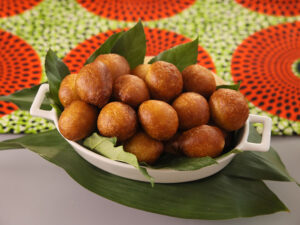
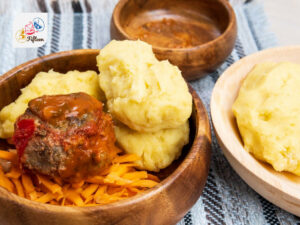
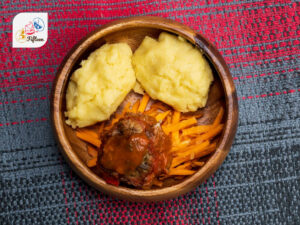
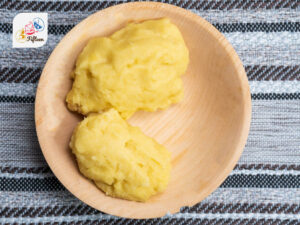
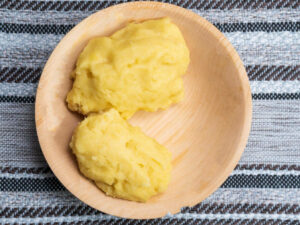
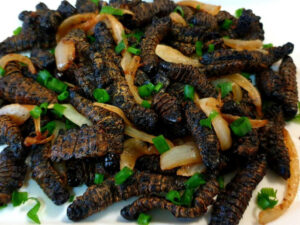
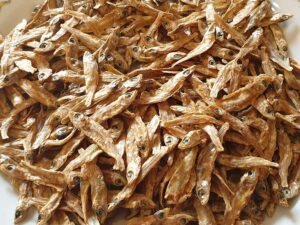
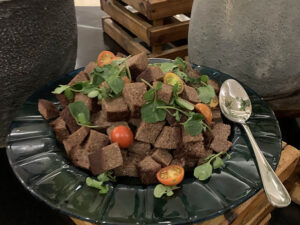
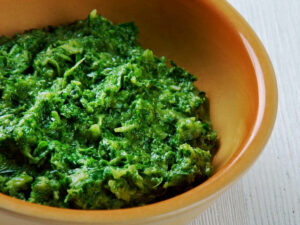
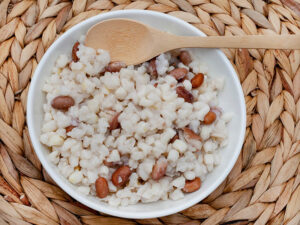
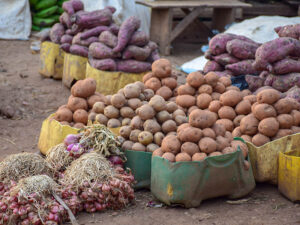
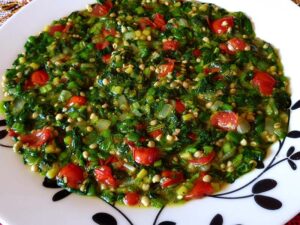
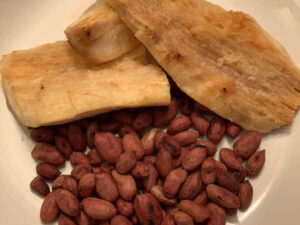
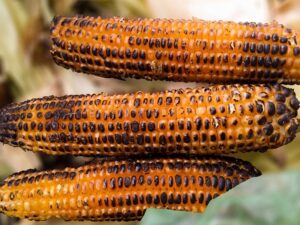
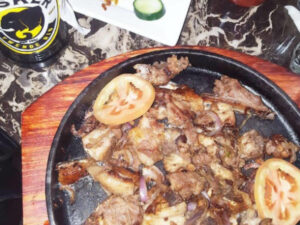
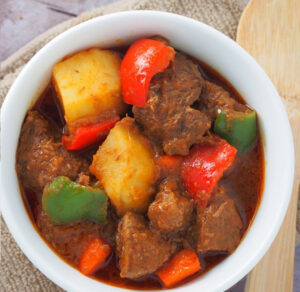
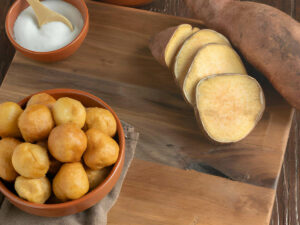
Jamie Scott
Editor in Chief, Senior Content Writer
Expertise
Home Cooking, Meal Planning, Recipe Development, Baking and Pastry, Food Editor, Cooking-video Maker, Western Food Evaluation Expert
Education
Le Cordon Bleu College of Culinary Arts
Local Community College, New York, NY
Jamie Scott is a skilled culinary expert and content creator specializing in Western cuisine. With over 15 years in the culinary field and formal training from Le Cordon Bleu, Paris, Jamie deeply understands how to blend nutrition with delicious flavors. His passion for cooking matches his commitment to making healthy eating accessible and enjoyable.
On Fifteen.net, Jamie brings a fresh perspective to classic dishes and beverages, offering readers insightful recipes, cooking tips, and a fresh view on meal planning that emphasizes taste, health, and simplicity.